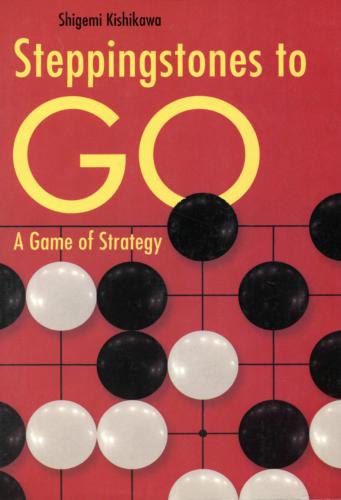Stepping Stones to Go. Shigemi Kishikawa
Steppingstones to
GO
Published by Tuttle Publishing
© 1965 by Charles E. Tuttle Co., Inc.
All rights reserved
Library of Congress Catalog Card No. 65-13411
ISBN: 978-1-4629-0463-1 (ebook)
First edition, 1965
Eighteenth printing, 2000
Printed in Singapore
Contents
| Foreword | 7 | |
| 1. | Equipment | 9 |
| 2. | The Game | 13 |
| 3. | Territory | 25 |
| 4. | Connection and Disconnection | 29 |
| 5. | Capture | 37 |
| 6. | Life and Death | 49 |
| 7. | Illegal Plays | 69 |
| 8. | Seki Situation | 75 |
| 9. | Ko Situation | 81 |
| 10. | Basic Tactics | 87 |
| 11. | Playing the Game | 107 |
| Problems | 113 | |
| Solutions | 137 | |
| The End of the Game | 157 |
Foreword
Go is a game played by two contestants. The game is played with black and white "stones" on a checkered board. The players are usually classed as strong and weak, based upon degree of knowledge and skill. The stronger player takes the white stones and the weaker player takes the black stones. Handicaps are given the weaker players by mutual agreement before commencement of the game. The game of go may be one of the most difficult to learn, but this fact makes the game highly interesting. Once techniques are mastered, the beginner will find it difficult to put the game aside.
Now, let's learn how to play go in the following chapters.
•1•
Equipment
The board or go ban
The board, or go ban as it is called in Japanese, is a solid block of wood, generally about four or five inches thick, resting upon four detachable legs. It is about 17½ inches long and 16 inches wide. The board and legs are usually stained yellow.
The best boards are made of kaya (Torreya Nucifera, or the famous Torrey pine of California). However, these boards are extremely expensive. Boards are also made of katsura (Japanese Judas tree), icho (gingko), or hinoki (Japanese cypress). Katsura boards, reasonable in price, are the most widely used today. Recently, flat boards without legs have been introduced, and are popular because they are more convenient and suitable when the game is played on a table or in a similar position.
The board is crisscrossed by 19 vertical and 19 horizontal lines, forming 361 points of intersection, and there are nine dotted points on its surface. These are called hoshi which means star, and they are used by the weaker player in the event of a handicap game. As will be seen, this gives the weaker player an advantage. Diagram 1 shows the surface of a go ban.
Diagram 1
The surface of go ban
showing the nine dotted points called hoshi
The stones or go ishi
As mentioned above, there are two kinds of stones: white and black. The white stones are made from clam-shells that come from Miyazaki Prefecture in Kyushu, the southern part of Japan. They have a lustrous polish and are pleasant to the touch. The black stones are made of a special kind of stone from the Nachi cataract in Kishiu, in central Japan, and are called Nachi ishi. As a good set of stones is quite expensive, cheaper stones, made of hard glass, are widely utilized. There are 361 stones, corresponding to the number of the points of intersection on the board. One hundred and eighty are white and the remaining 181 are black. As the weaker player takes the black stones and is entitled to the first move, the extra stone is black. In actual play, about 150 stones of each color are sufficient to play a game. The stones are contained in lacquered boxes or go ke.
The stones in play are placed on the points of intersection of the lines and not on the squares as in chess. Once placed, they cannot be removed, remaining on the points where they are placed until the end of a game, except when they are captured.
A hint should be given the beginner not to grasp a large handful of stones in one hand and use it to feed the other. Each stone should be withdrawn from the box at the conclusion of the opponent's turn to play and only when it is required for immediate use.
It is not absolutely necessary to learn the correct way to handle stones, but, for your reference, it is as follows: grasp the stone lightly between middle and index fingers of the right hand, resting it lightly on the nail of the index finger—an act that requires some practice to perform gracefully.
•2•
The Game
The
